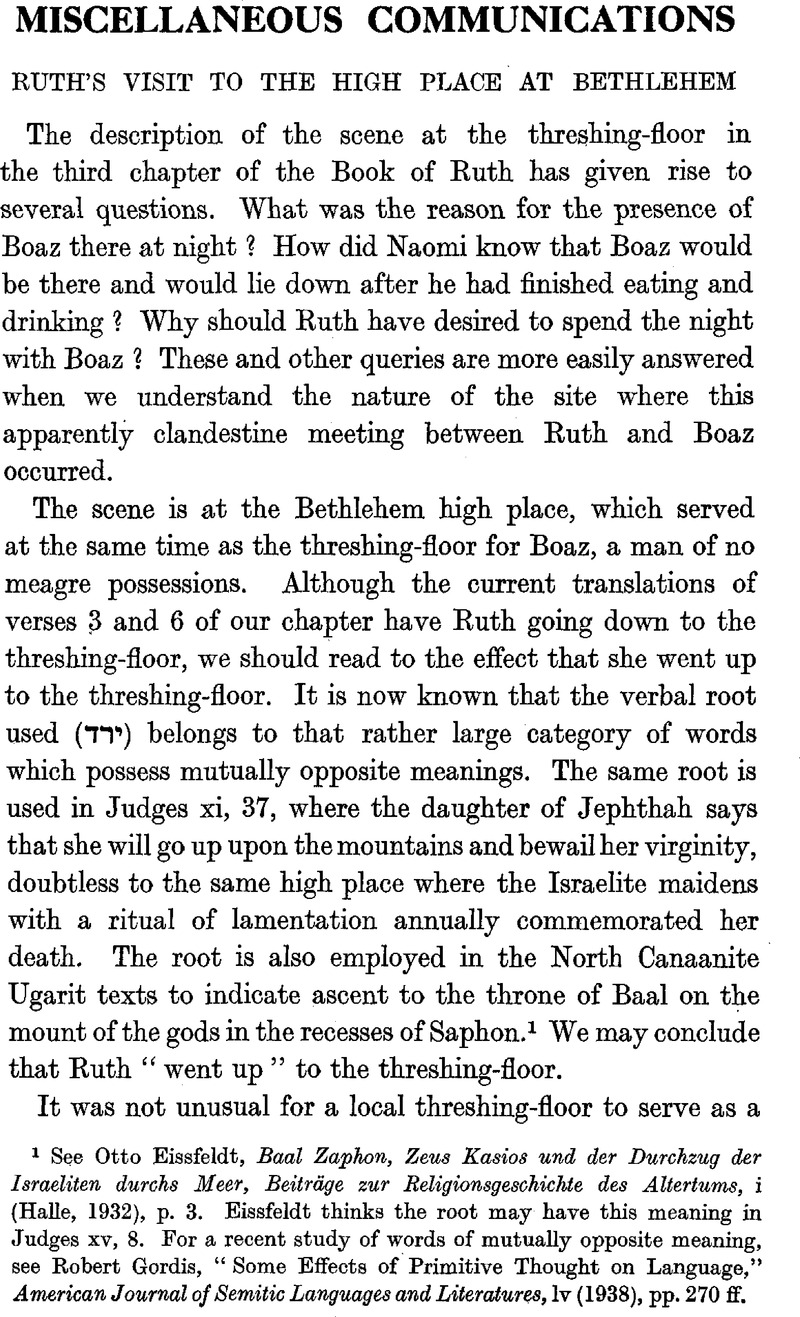No CrossRef data available.
Article contents
Ruth's visit to the High Place at Bethlehem
Published online by Cambridge University Press: 15 March 2011
Abstract

- Type
- Miscellaneous Communications
- Information
- Copyright
- Copyright © The Royal Asiatic Society 1939
References
page 75 note 1 See Eissfeldt, Otto, Baal Zaphon, Zeus Kasios und der Durchzug der Israelites, durchs Meer, Beiträge zur Religionsgeschichte des Altertums, i (Halle, 1932), p. 3Google Scholar. Eissfeldt thinks the root may have this meaning in Judges xv, 8. For a recent study of words of mutually opposite meaning, see Gordis, Robert, “Some Effects of Primitive Thought on Language,” American Journal of Semitic Languages and Literatures, lv (1938), pp. 270 ff.CrossRefGoogle Scholar
page 76 note 1 See May, H. G., “The Fertility Cult in Hosea,” American Journal of Semitic Languages and Literatures, xlviii (1932), pp. 73 ff.CrossRefGoogle Scholar
page 77 note 1 Cf. Staples, W. E., “The Book of Ruth,” American Journal of Semitic Languages and Literatures, liii (1937), pp. 147 ff.Google Scholar
page 77 note 2 Some of these are pointed out by Staples, loc. cit., and by Jeremias, A., Das alte Testament im Lichte des alten Orients (Leipzig, 1930, 4th edition), pp. 487 ff.Google Scholar




